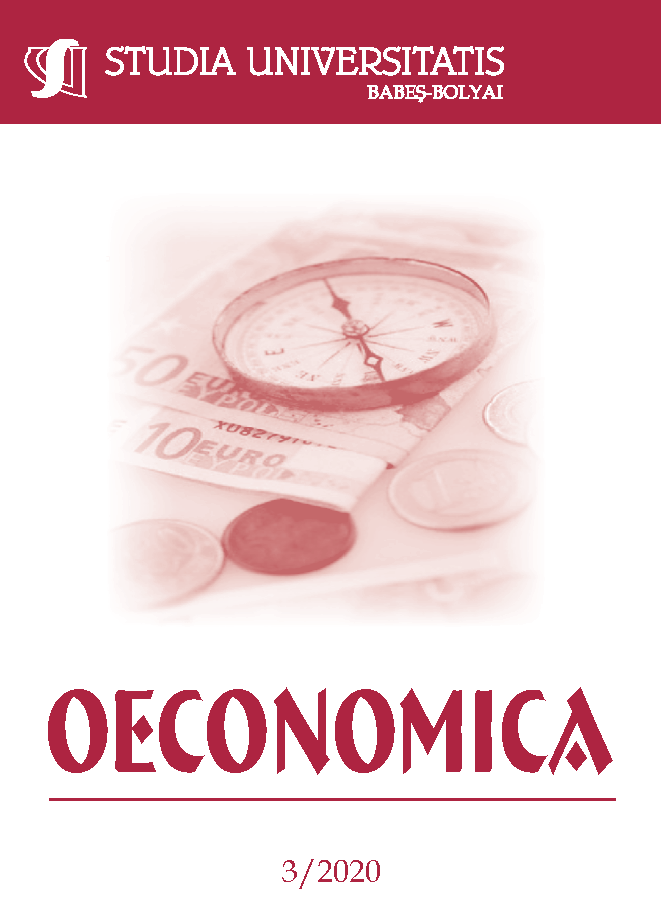INTERNAL BRANDING: ANTECEDENTS OF EMPLOYEE ATTITUDES, SATISFACTION, AND ORGANIZATIONAL LOYALTY
DOI:
https://doi.org/10.2478/subboec-2020-0013Keywords:
internal branding, attitudes, satisfaction, loyaltyAbstract
As competition between employers has become more intense in recent years, employee-based differentiation has become one of the strategic solutions for many organizations. The objective of this paper is to test a nomological model between internal branding, attitude, satisfaction, and loyalty. Data were collected through a survey among employees of a leading electronics conglomerate from Romania. While the relationship between attitudes and loyalty is partially mediated by satisfaction, the relationship between internal branding and satisfaction is indirect, with full mediation by attitudes being detected. The results of the study agree with previous studies, which suggested that internal branding influenced certain employee behaviors, such as positive attitudes, satisfaction, or loyalty.
JEL classification: M31, M52
References
Byrne, B. M. (2010). Structural equation modeling with AMOS: Basic concepts, applications, and programming. 2nd Edition. Routledge Taylor & Francis.
de Chernatony, L. (1999). Brand management through narrowing the gap between brand identity and brand factors driving successful financial services brands. European Journal of Marketing, 15(1/3), 157-179.
Fletcher C., Williams, R. (1996). Performance management, job satisfaction and organizational commitment. British Journal of Management, 7(2), 169–179.
Fornell, C., & Larcker, D.F. (1981). Evaluating Structural Equation Models with Unobservable Variables and Measurement Error. Journal of Marketing Research, 18(1), 39-50.
Gu, Z., & Siu, R. C. (2009). Divers of job satisfaction as related to work performance in Macao casino hotels: An investigation based on employee survey. International Journal of Contemporary Hospitality Management, 21(5), 561–578.
Hair, J., Black, W., Babin, B., and Anderson, R. (2010). Multivariate data analysis (7th ed.). Prentice-Hall, Inc. Upper Saddle River, NJ, USA.
Hoffman, J., & Mehra, S. (1999). Operationalizing productivity improvement programs through total quality management. International Journal of Quality and Reliability Management, 16(1), 72-73.
Kahn, W.A. (1990). Psychological conditions of personal engagement and disengagement at work. Academy of Management Journal, 33(4), 692–724.
Lee Y. K., Nam J. H., Park D. H., Lee K. A. (2006). What factors influence customer-oriented prosocial behavior of customer-contact employees? Journal of Services Marketing, 20(4), 251–264.
Lee Y.K, Kim S., Kim S.Y. (2015) The Impact of Internal Branding on Employee Engagement and Outcome Variables in the Hotel Industry. Asia Pacific Journal of Tourism Research. 19(12), 1359-1380.
Li C., Guo S., Cao L., Li J., (2018). Digital enablement and its role in internal branding: A case study of HUANYI travel agency. Industrial Marketing Management, 72, 152-160.
Liu G., Ko W.W., Chapleao C. (2017). Managing employee attention and internal branding. Journal of Business Research, 79, 1-11.
M’zungu, S. D., Merrilees, B., & Mille, D. (2010). Brand management to protect brand equity: A conceptual model. Brand Management, 17(8), 605-617.
Maslach C., Schaufelli W. B., Leiter M. P. (2001). Job burnout. Annual Review of Psychology, 52(1), 397–422.
Punjaisri, K., Wilson, A., & Evanschitzky, H. (2008). Exploring the influences of internal branding on employees’ brand promise delivery: Implications for strengthening customer-brand relationships. Journal of Relationship Marketing, Vol. 7, No. 4, pp. 407-423.
Tajfel, H., Turner, J.C. (1985). The Social Identity Theory of Intergroup Behavior. In:
Worchel, S. and Austin, W.G., Eds., Psychology of Intergroup Relations, 2nd Edition, Nelson Hall, Chicago, pp. 7-24.
Terglav K., Ruzzier M.K., Kaše R. (2016). Internal branding process: Exploring the role of mediators in top management’s leadership–commitment relationship. International Journal of Hospitality Management, 54, 1-11.
Terry, N. (2003). Marketers merit a greater role in internal activity. Marketing, pp. 18.
Turkyilmaz A., Akman G., Ozkan C., Pastuszak Z. (2011). Empirical study of public sector employee loyalty and satisfaction. Industrial Management & Data Systems, 111(5), 675–696.
Vatankhah S., Darvishi M. (2018). An empirical investigation of antecedent and consequences of internal brand equity: Evidence from the airline industry. Journal of Air Transport Management, 69, 49-58
Wang Y.C., Yang J., Yang C.E. (2019). Hotel internal branding: A participatory action study with a case hotel. Journal of Hospitality and Tourism Management, 40, 31-39.
Welch M. (2011). Appropriateness and acceptability: employee perspectives of internal communication. Public Relations Review, 38, 246-254.
Wu L., Norman I. J. (2006). An investigation of job satisfaction, organizational commitment and role conflict and ambiguity in a sample of Chinese undergraduate nursing students. Nurse Education Today, 26(4), 304–314.
Downloads
Published
How to Cite
Issue
Section
License
Copyright (c) 2020 Studia Universitatis Babeș-Bolyai Oeconomica

This work is licensed under a Creative Commons Attribution-NonCommercial-NoDerivatives 4.0 International License.






